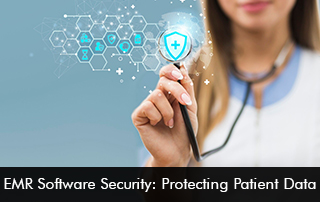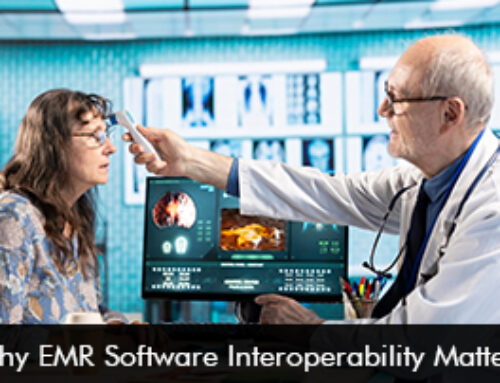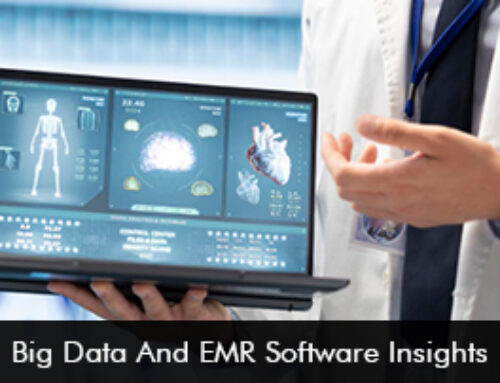Patient data is one of the most sensitive forms of information in any EMR Software. It contains personal details, medical histories, and financial records. A breach can lead to identity theft, fraud, and severe reputational damage for healthcare providers.
Historically, patient records were stored in paper files, making them vulnerable to loss, theft, or unauthorized access. Even when digital systems were introduced, early electronic health records (EHRs) lacked robust security measures, leading to frequent data leaks.
This changed with the rise of EMR Software (Electronic Medical Records Software), which revolutionized patient data storage, access, and protection.
How Patient Data Was at Risk Before EMR Software
Before EMR, healthcare providers relied on:
1. Paper-Based Records: Easy to Lose, Hard to Secure
Paper files could be misplaced, damaged, or accessed by unauthorized personnel. There was no way to track who viewed or altered records.
2. Early Digital Systems: Weak Encryption & Poor Access Controls
First-generation digital systems stored data in basic databases with minimal security. Many lacked encryption, making them easy targets for hackers.
3. No Standardized Compliance Rules
There were no strict regulations governing patient data security, leading to inconsistent protection measures across healthcare facilities.
How EMR Software Transformed Patient Data Security
EMR Software introduced advanced security protocols to safeguard sensitive health information. Here’s how:
1. Advanced Encryption Techniques
Modern EMR uses AES-256 encryption, ensuring that even if data is intercepted, it remains unreadable without decryption keys.
2. Role-Based Access Control (RBAC)
Only authorized personnel (doctors, nurses, administrators) can access specific patient records based on their role, reducing insider threats.
3. Audit Trails for EMR Software Accountability
Every access or modification is logged, allowing healthcare providers to track who viewed or changed a patient’s record.
4. Multi-Factor Authentication (MFA)
EMR often requires multiple verification steps (password + biometric scan or OTP) to prevent unauthorized logins.
5. Secure Cloud Storage & EMR Software Backups
Unlike paper records, cloud-based EMR ensures data is backed up and protected against physical disasters like fires or floods.
HIPAA Compliance & EMR Software
The Health Insurance Portability and Accountability Act (HIPAA) set strict guidelines for patient data security. EMR plays a crucial role in helping healthcare providers stay compliant by:
1. Ensuring Data Privacy
HIPAA requires that only authorized individuals access patient data. EMR Software enforces this through strict access controls.
2. Mandating Regular Security Audits
Providers must conduct periodic risk assessments, and EMR simplifies this with automated audit logs.
3. Secure Data Transmission
HIPAA requires encryption for data in transit (e.g., emails, file transfers). EMR integrates secure messaging and encrypted file-sharing options.
4. EMR Software Breach Notification Protocols
If a breach occurs, HIPAA mandates timely reporting. EMR helps detect breaches early and automates compliance reporting.
Future Trends in EMR Software Security
As cyber threats evolve, EMR Software continues to adapt with cutting-edge security measures:
1. AI-Powered Threat Detection
Artificial Intelligence can identify unusual access patterns, flagging potential breaches before they escalate.
2. Blockchain for Immutable Records
Blockchain technology could make the software even more secure by creating tamper-proof patient records.
3. Zero-Trust Security Models
Future software may adopt zero-trust frameworks, requiring continuous identity verification for every access request.
4. Biometric Authentication Expansion
Facial recognition, fingerprint scans, and voice authentication may replace traditional passwords for stronger security.
Conclusion
EMR Software has revolutionized patient data security, moving healthcare from vulnerable paper records and weak digital systems to encrypted, access-controlled, and HIPAA-compliant solutions. With advancements like AI, blockchain, and biometrics, the future of EMR Software security looks even more promising.
Investing in secure EMR Software isn’t just a compliance requirement for healthcare providers—it’s a critical step in protecting patients and maintaining trust in the digital healthcare era.







